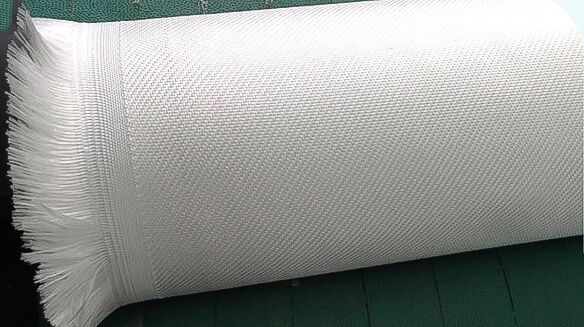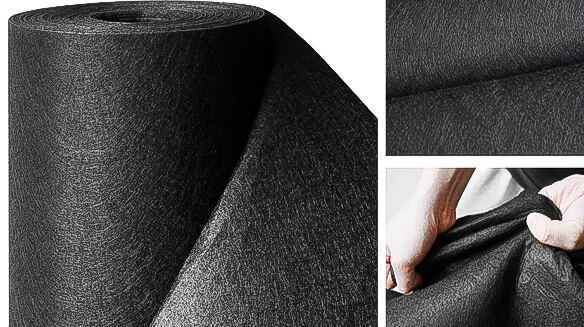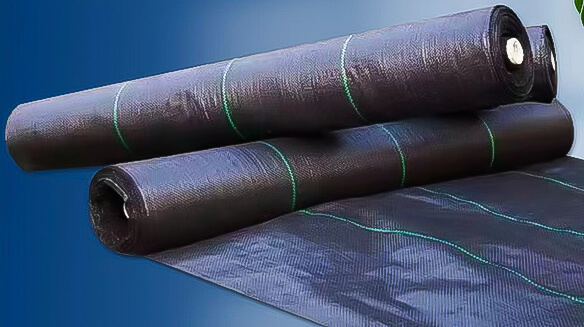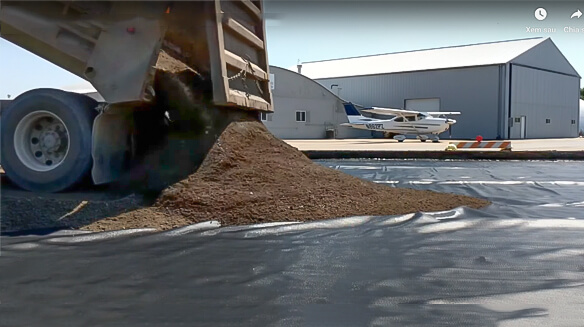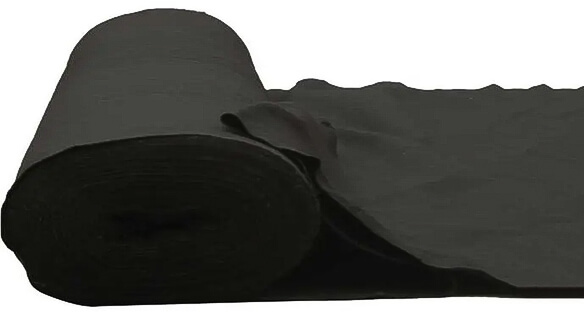Contents
- How Does Geotextile Fabric Work? Explore Woven Geotextiles
- Introduction to Woven Geotextile Fabric and Geotextiles
- Differences Between Woven and Nonwoven Geotextiles
- Choosing the Ideal Geotextile Fabric for Your Project
- Geotextiles in Education and Their Functions
- How to Incorporate Geotextiles into Your Garden Design
- Enhancing Work Efficiency through Geotextiles
- Conclusion
- Frequently Asked Questions
How Does Geotextile Fabric Work? Explore Woven Geotextiles
Meta: Discover the diverse applications of Geotextile Fabric in promoting soil stabilization and erosion control while unlocking its potential in creating a robust and low-maintenance landscape. Learn how this innovative synthetic material excels in bolstering drainage, preventing soil erosion, and restraining weed growth, making it an indispensable solution for various construction and landscaping projects. If you’ve ever wondered, “What is the Purpose of Geotextile Fabric?”, this comprehensive guide has all the answers.
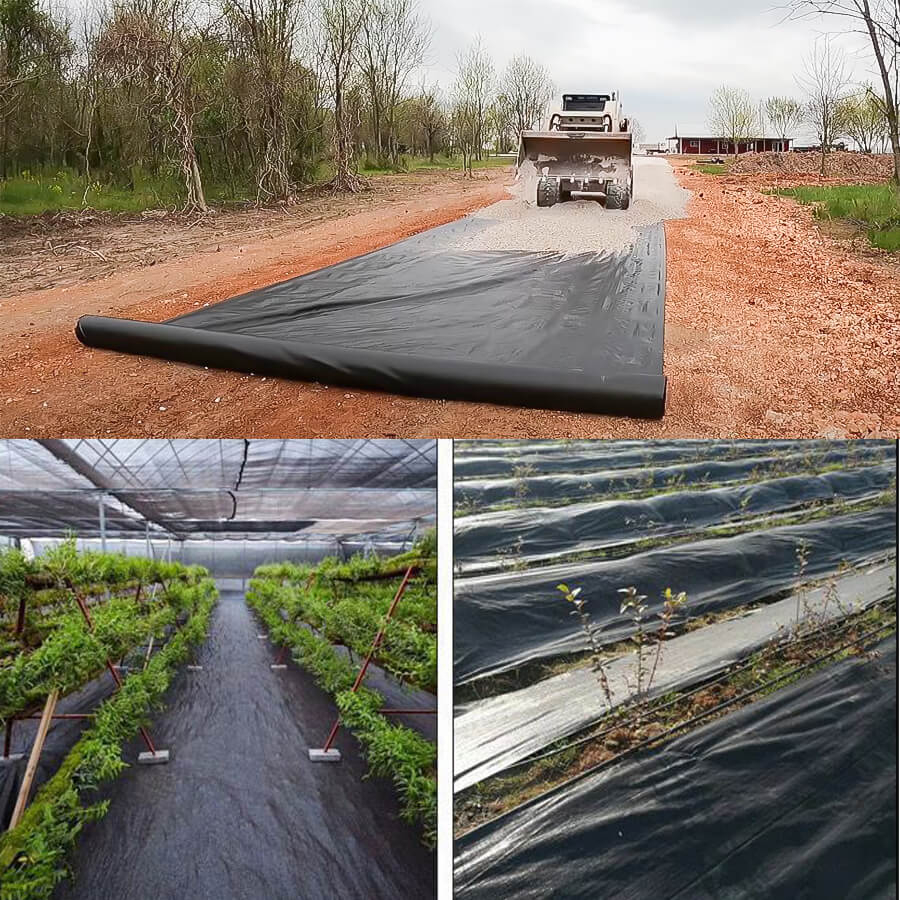
Introduction to Woven Geotextile Fabric and Geotextiles
Textiles, while often associated with clothing, find pivotal usage in construction as well, particularly geotextiles like woven geotextile fabrics. These special fabrics, with threads crisscrossed in an interweaving pattern, are sturdy and adaptable to diverse conditions.
The unique traits of woven geotextiles, like stabilizing soil, separating materials, and preventing erosion, set them apart from common fabrics. Their versatility aids in ensuring safety and enhancing the durability of construction projects. But what is the principle behind the functioning of geotextile fabric?
In a nutshell, geotextile fabrics work as permeable barriers. They allow fluid movement but halt fine particles, playing a significant role in soil filtration and drainage, and strengthening structural foundations. Woven geotextile fabric, resilient to biological and chemical components, provides robust support in challenging environments. Given the functionality of these fabrics, it’s evident that woven geotextiles are transforming modern construction methods.
Incorporating Geotextiles into Your Garden Landscape Fabric Design
Planning to cultivate a thriving herb garden or looking to enrich your current landscape design? Incorporating the right geotextile can bring significant transformation. Geotextiles essentially serve as a permeable layer sandwiched between the soil and your landscape fabric. They allow critical nutrients and water to seep in while restricting weed growth.
Woven geotextiles are renowned for their combination of strength and filtration. Frequently used as silt fences, these geotextiles control erosion while improving your herb garden’s health. They work by acting as a barrier against undesired materials like weeds or excessive silt while permitting essential nutrition, air, and water to filter through, maintaining your garden’s vibrancy.
Integrating geotextiles into your garden might appear overwhelming initially, but with a sound understanding of their functionality, it becomes manageable. Selecting the appropriate geotextile can elevate your garden’s longevity and aesthetic appeal. Geotextiles indeed offer a dual advantage – a perfect blend of form and function that every gardener desires.
image vườn
Differences Between Woven and Nonwoven Geotextiles
Woven and nonwoven geotextiles contrast significantly. The construction of woven geotextiles resembles conventional textile weaving, where the interlacing of long threads results in an exceptionally strong fabric. This strength is key to tolerating heavyweight and wear. On the flip side, nonwoven geotextiles arise from tangled fibers, usually induced by heat or chemicals. They are typically puffier and show more absorbency than woven ones.
The unique characteristics of woven and nonwoven geotextiles make them suitable for varied applications. Woven ones often come into play when the project demands substantial strength, such as road construction or erosion control. Conversely, nonwoven ones frequently show up in scenarios where drainage and filtration are paramount, like in landscape fabric designs. When choosing between woven and nonwoven, project needs become the deciding factor.
In summary, both types of geotextiles hold immense value in the textile industry. The trick is to grasp the functioning of each fabric type and choose the optimal geotextiles for your specific needs.
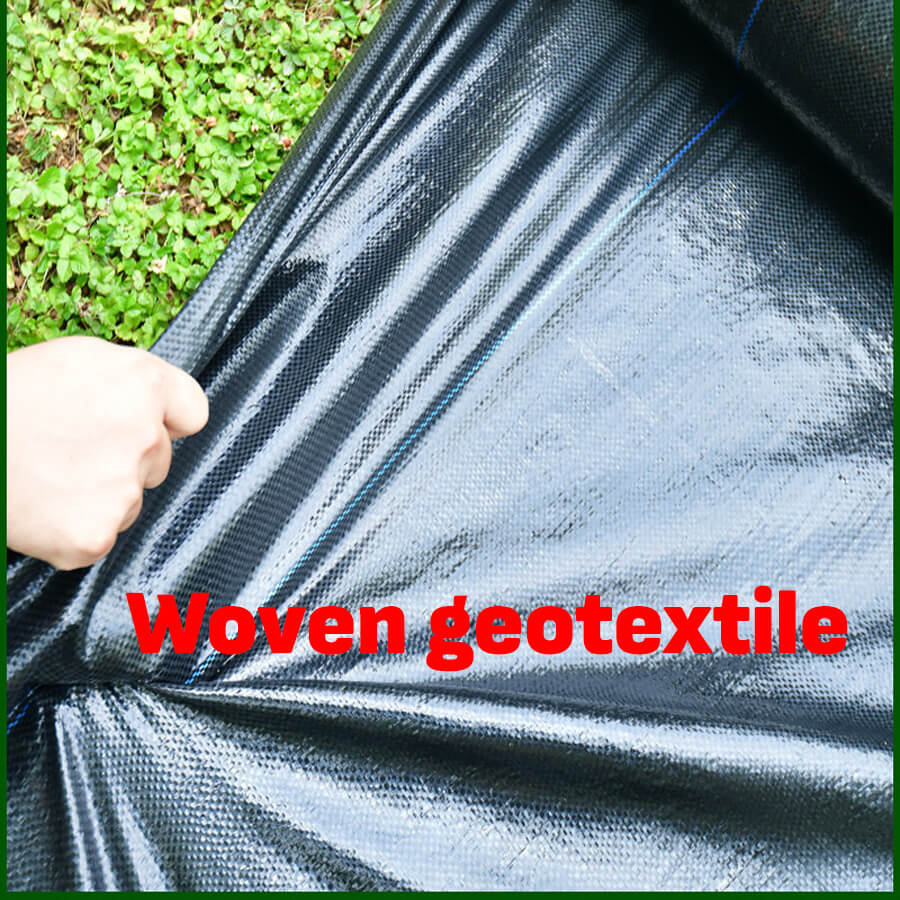
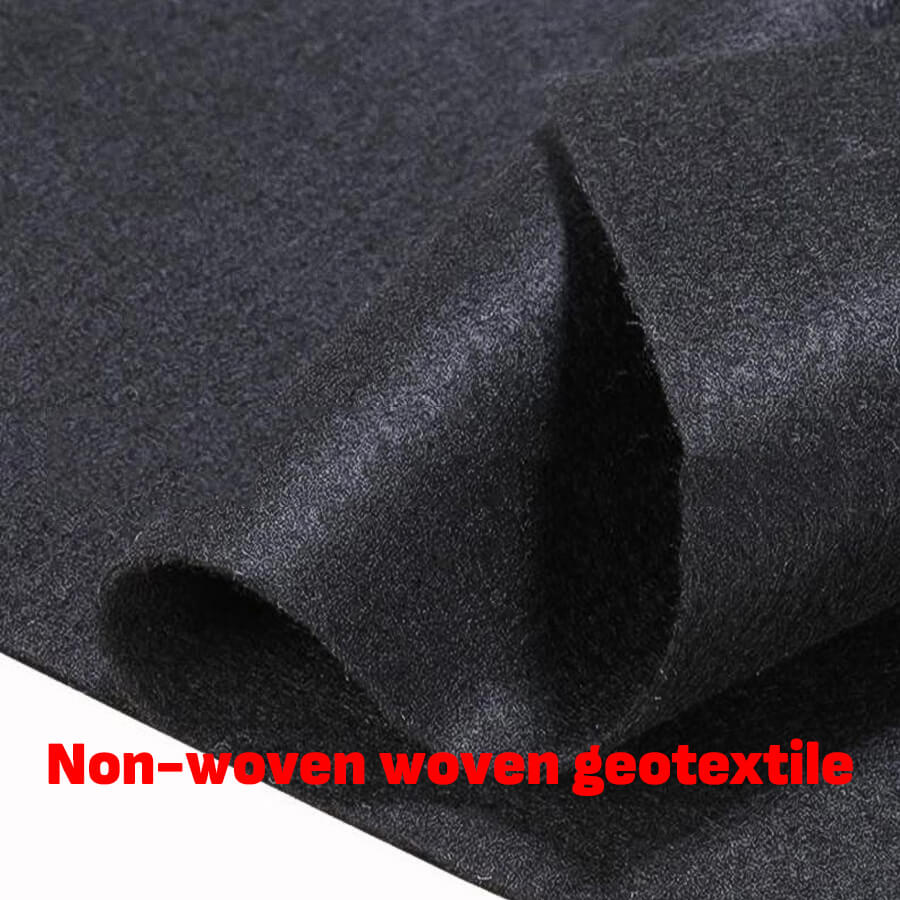
Understanding How Geotextiles Work as Landscape Materials for Gardens
Preparing your garden? Consider geotextile fabric as a vital landscape material. Geotextiles, including geotextile fabrics, hold a primary role – they form a stable base for materials like sand, soil, and rocks. Although the functionality seems simple, the underlying technology is intricate.
These types of synthetic fabrics have a unique purpose – soil quality improvement. They act as barriers that allow water seepage while halting erosion and undesired plant growth.
Geotextile fabric differs from regular fabric. It involves a production method where a network of interlocking or interconnected filaments takes shape. Typical materials include polypropylene or polyester. The selection between woven and nonwoven geotextiles depends on the production method.
People often view woven geotextiles as the more robust variant, ideal for high-strength applications. The choice between the two depends on your soil and project needs. So remember, geotextile fabric can make a significant difference when selecting materials for your garden landscape.
Choosing the Ideal Geotextile Fabric for Your Project
Selecting the right geotextile fabric is key to a successful project. Different geotextiles cater to varied project goals. Here’s a quick guide to help. Woven geotextiles, known for their strength and durability, fit well in projects demanding long-term robustness. This fabric can bear construction rigors and perform exceptionally in erosion control and soil stabilization. Selection of the correct geotextile requires consideration of your project’s specific demands and conditions.
Non-woven geotextiles, another common geotextile type, work best for projects needing efficient filtration and drainage. They are great for garden landscape fabric design, especially when incorporating geotextiles. Geotextiles primarily act as a barrier between soil layers, preventing material mixing and maintaining the project’s structural integrity. Both types have merits, so the ideal geotextile comes down to your project’s specific needs.
In conclusion, for the right geotextile choice, scrutinize your project’s complexity, comprehend geotextiles’ operation, and then decide on the perfect geotextile fabric to meet your needs.
Pros and Cons of Using Woven Geotextile Fabrics and Other Materials
It’s crucial to understand woven geotextile fabrics’ functioning before using them in landscape design. They are effective materials for diverse landscaping projects due to their unique features. Like all materials, woven geotextiles also have pros and cons.
The benefits of geotextile fabrics are plenty. Primarily, woven geotextiles are durable materials designed to resist harsh conditions. These fabrics are also user-friendly, making them suitable even for DIY enthusiasts. Geotextile fabrics are also eco-friendly, making them an excellent choice for those embracing green practices.
However, woven geotextile fabrics also present certain downsides. The key disadvantage is their lower flexibility compared to other fabrics. This reduced elasticity can cause problems when dealing with curves or uneven surfaces. Also, despite their excellent strength, woven geotextiles can be tougher to cut and shape than other materials.
By understanding these benefits and drawbacks, you can make a better choice for your project. It boils down to analyzing your specific garden landscape fabric design needs and selecting the appropriate material accordingly.
Geotextiles in Education and Their Functions
Geotextiles, both woven and nonwoven, have carved a crucial place in multiple sectors, notably construction and landscaping. Let’s unravel the workings of geotextile fabric and grasp their roles. Geotextiles can be considered the textile woven into the fabric of our landscapes and gardens, playing key roles in soil stabilization, erosion control, filtration, and drainage, significantly enhancing the overall landscape design.
Woven geotextiles stand out in the crowd. These fabrics interweave to form a robust, sturdy base for construction. A thorough understanding of woven geotextiles can be gleaned from a good book or online sources.
Selecting the right geotextile fabric for your project can be tricky, especially when distinguishing between woven and nonwoven geotextiles. However, by realizing the pros and cons of using woven geotextile fabrics, as discussed earlier, you can make a well-informed decision. Simply put, choose woven geotextiles for strength and longevity.
In conclusion, understanding geotextiles isn’t only about grasping how they work; it’s about acknowledging their essential roles in our lives. Incorporating geotextiles, no matter the field can enhance the structure and longevity of your project, whether it’s gardening, landscaping, or construction.
Features of Geotextiles that Make Them a Versatile Work Material
Geotextiles stand out with their unique blend of high strength and low permeability, features that make them a versatile work material. This fabric is remarkable for its unique properties, durability, and functionality. Geotextile fabric is permeable, allowing fluid passage while holding the soil together. Its robustness and resistance make it ideal for construction and landscaping.
Their high strength ensures heavy load handling, and their low permeability properties prevent unwanted substance passage. Whether it’s for garden landscape fabric design, construction projects, or intricate woven geotextiles, geotextiles are a go-to material for numerous scenarios.
Their versatility stems from their adaptability and their role as landscape materials for various projects. Regardless of whether you’re using woven geotextile fabrics or other types, geotextiles prove their value in every situation. Be it heavy-duty construction, environmental infrastructure, or personal use, geotextiles are your material of choice. Remembering their combination of high strength and low permeability can help you select the right geotextile fabric for your specific task.
How to Incorporate Geotextiles into Your Garden Design
Geotextile fabric can make a significant impact in a garden setting, offering a beneficial environment for plant growth and development. The task lies in appropriately incorporating geotextiles into your garden layout. Geotextiles aid in creating a conducive growth space for plants by controlling soil erosion and retaining moisture.
For areas experiencing high traffic, such as garden paths, woven geotextiles are an ideal choice due to their high strength and durability. They can withstand harsh conditions, outperforming nonwoven geotextiles in certain aspects. On the other hand, nonwoven geotextiles excel in providing excellent water drainage and soil stabilization, making them perfect for plant beds.
Educating yourself about the different types of geotextiles and their functions is critical before deciding. Each type of fabric has unique features making them suitable for specific scenarios. For instance, if strength is a priority, woven geotextiles could be the right choice. A thorough understanding of geotextiles, their advantages, and disadvantages will greatly contribute to creating a unique garden layout.
Comparing the Benefits of Nonwoven and Woven Geotextiles
When contemplating which geotextiles to use for your project, understanding the benefits of nonwoven geotextiles versus woven fabrics is incredibly important. Unlike woven geotextiles that are made by weaving threads together, nonwoven geotextiles are created by random bonding or needle-punching synthetic fibers, giving them superior drainage capabilities. This process creates a dense, felt-like structure that excels in infiltration. However, woven geotextiles are typically stronger and more durable, making them ideal for applications requiring high-stress tolerance.
In the realm of landscape design, both types of geotextiles play important roles. Due to their strength, woven geotextiles are often used in applications requiring high durability, such as under roads or pavers. Conversely, nonwoven geotextiles are preferred in scenarios demanding efficient drainage and filtration, such as in gardens. When deciding between nonwoven and woven geotextiles, it’s important to understand the intended application of the fabric. Choosing the right geotextile fabric for your project will ensure optimal efficiency and longevity in any landscaping or construction endeavor.
Enhancing Work Efficiency through Geotextiles
Geotextiles find application in a wide range of scenarios, owing to their varied properties that enhance work efficiency. Whether it’s woven or nonwoven, geotextiles can significantly improve the effectiveness of a project. In the context of garden designs, they serve as excellent landscape materials. Their versatile features make them an appropriate choice for numerous projects.
The benefits of woven geotextiles become evident when applied in garden landscape designs, offering superior strength and stability over their nonwoven counterparts in certain situations. However, the choice of geotextile doesn’t solely depend on the type of fabric but also on its efficiency in the given application.
Beyond garden designs, geotextiles find use in applications such as soil erosion control and drainage systems. Therefore, choosing the correct geotextile fabric largely depends on the intended application. Understanding geotextiles and their functionalities is crucial to fully leverage their work efficiency.
Geotextiles, with their varied applications and high efficiency, are truly game-changing. Choosing the appropriate geotextile fabric for your needs can significantly enhance the success and outcome of your project.
Conclusion
Geotextile Fabric, particularly woven geotextiles, plays a vital role in construction and landscaping projects by promoting soil stabilization, and erosion control, and enhancing overall work efficiency. Its permeable barrier design allows for fluid movement while preventing the passage of fine particles, making it ideal for soil filtration and drainage. Understanding the distinctions between woven and nonwoven geotextiles helps in selecting the right fabric for specific project needs.
Frequently Asked Questions
How does geotextile fabric work?
Geotextile fabric works as a permeable barrier, allowing the passage of fluids while preventing the movement of fine particles. This property makes it effective for soil filtration, drainage, and enhancing soil stability.
How can geotextile fabric be used in garden design?
Geotextile fabric can be used in garden design as a permeable layer between soil and landscape fabric. It allows essential nutrients and water to seep through while preventing weed growth, contributing to a healthier and more vibrant garden.
What are the advantages and disadvantages of using woven geotextile fabrics?
Advantages: Woven geotextiles are durable, strong, and resistant to harsh conditions, making them ideal for long-term robustness in construction and erosion control projects.
Disadvantages: They may be less flexible and tougher to cut and shape compared to other materials.
How does selecting the right geotextile fabric affect project efficiency?
Choosing the right geotextile fabric for a project based on its specific needs and conditions can significantly enhance work efficiency. Woven geotextiles are suitable for applications requiring high strength and durability, while nonwoven geotextiles excel in projects demanding efficient drainage and filtration. The appropriate fabric selection ensures optimal efficiency and longevity in various construction and landscaping endeavors.

